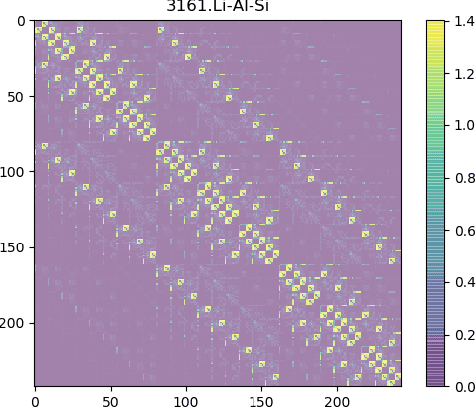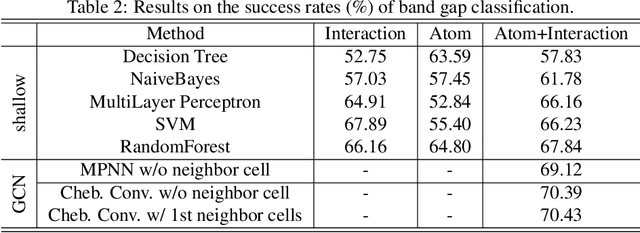Qimin Yan
Graph Transformer Networks for Accurate Band Structure Prediction: An End-to-End Approach
Nov 25, 2024



Abstract:Predicting electronic band structures from crystal structures is crucial for understanding structure-property correlations in materials science. First-principles approaches are accurate but computationally intensive. Recent years, machine learning (ML) has been extensively applied to this field, while existing ML models predominantly focus on band gap predictions or indirect band structure estimation via solving predicted Hamiltonians. An end-to-end model to predict band structure accurately and efficiently is still lacking. Here, we introduce a graph Transformer-based end-to-end approach that directly predicts band structures from crystal structures with high accuracy. Our method leverages the continuity of the k-path and treat continuous bands as a sequence. We demonstrate that our model not only provides accurate band structure predictions but also can derive other properties (such as band gap, band center, and band dispersion) with high accuracy. We verify the model performance on large and diverse datasets.
Graph Neural Network for Hamiltonian-Based Material Property Prediction
May 27, 2020



Abstract:Development of next-generation electronic devices for applications call for the discovery of quantum materials hosting novel electronic, magnetic, and topological properties. Traditional electronic structure methods require expensive computation time and memory consumption, thus a fast and accurate prediction model is desired with increasing importance. Representing the interactions among atomic orbitals in any material, a material Hamiltonian provides all the essential elements that control the structure-property correlations in inorganic compounds. Effective learning of material Hamiltonian by developing machine learning methodologies therefore offers a transformative approach to accelerate the discovery and design of quantum materials. With this motivation, we present and compare several different graph convolution networks that are able to predict the band gap for inorganic materials. The models are developed to incorporate two different features: the information of each orbital itself and the interaction between each other. The information of each orbital includes the name, relative coordinates with respect to the center of super cell and the atom number, while the interaction between orbitals are represented by the Hamiltonian matrix. The results show that our model can get a promising prediction accuracy with cross-validation.
 Add to Chrome
Add to Chrome Add to Firefox
Add to Firefox Add to Edge
Add to Edge